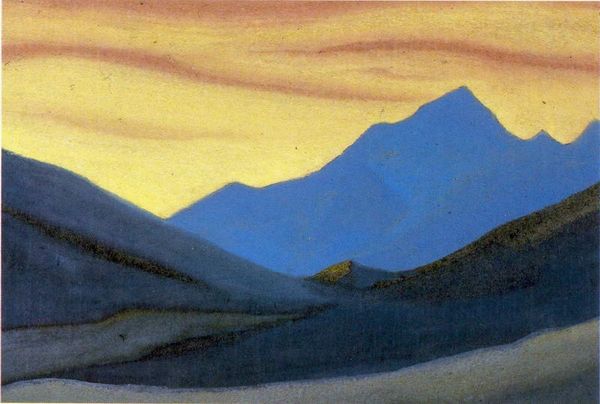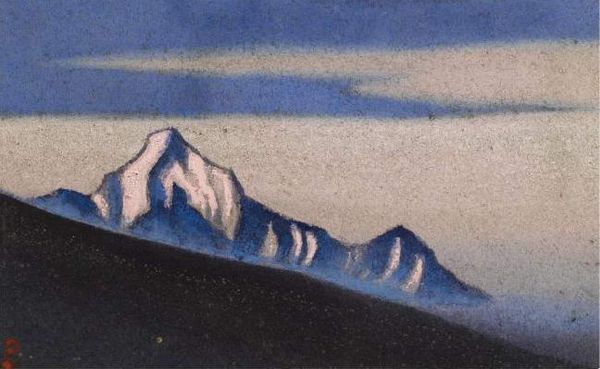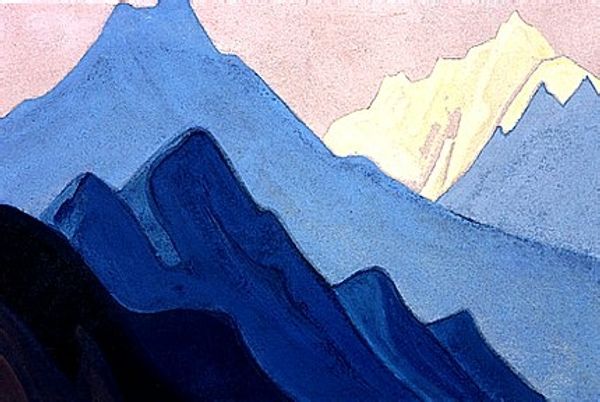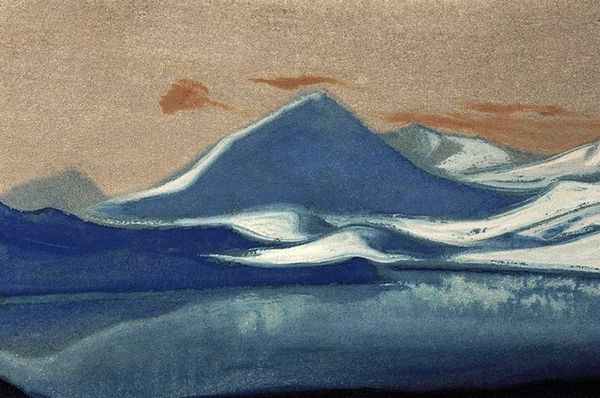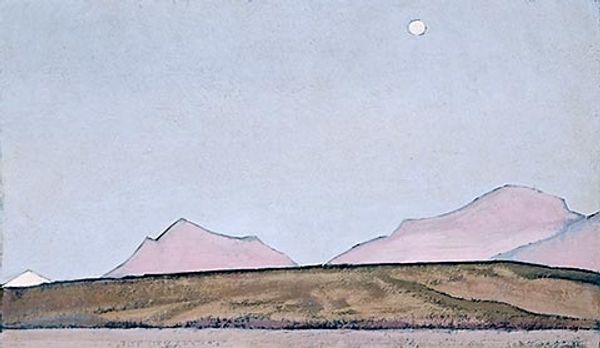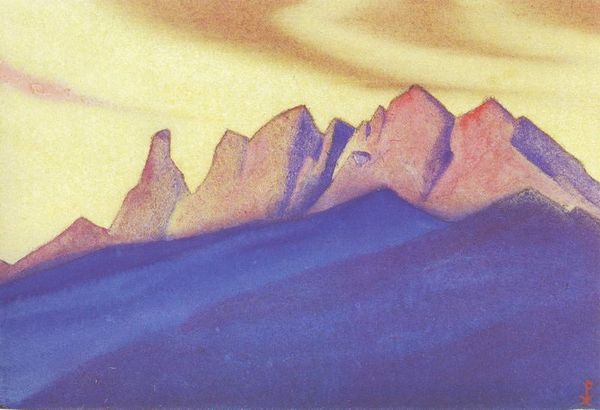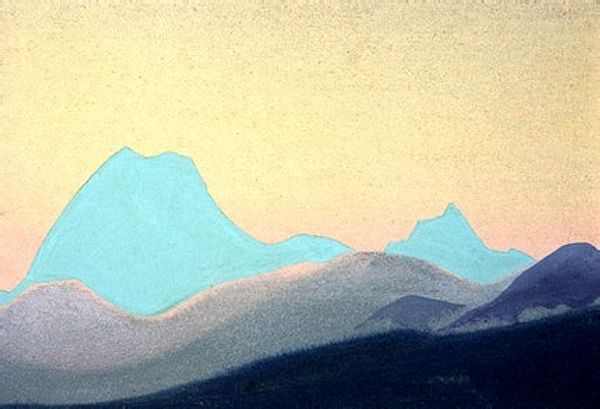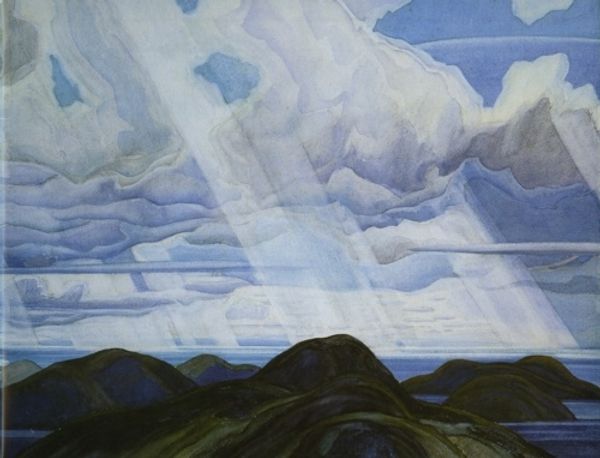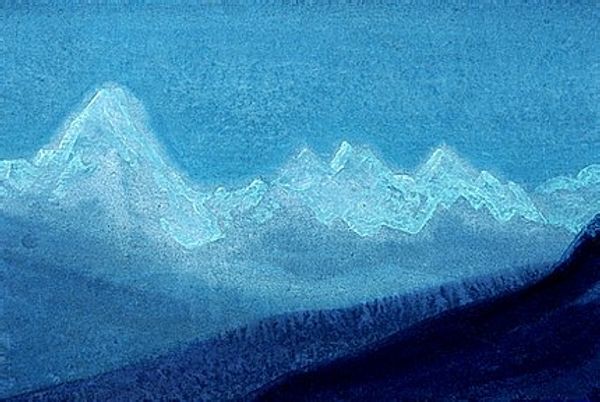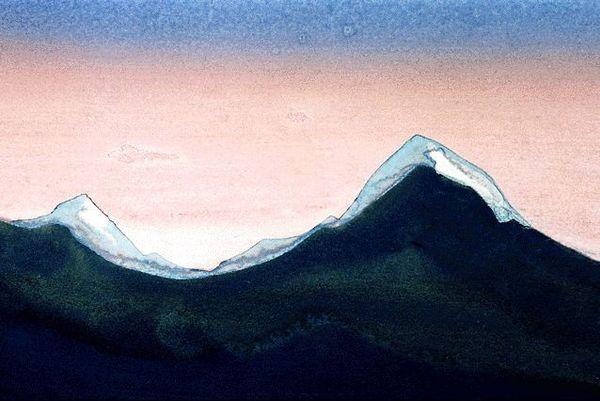
tempera, painting
#
sky
#
tempera
#
painting
#
landscape
#
oil painting
#
mountain
#
orientalism
Copyright: Public domain
Editor: Here we have Nicholas Roerich's painting, Himalayas, done in tempera. It's so serene and… distant. What do you see in this piece? Curator: I see a fascinating engagement with materiality and the construction of the "Orient." Roerich employs tempera, a humble material with historical ties to icon painting. Considering his interest in Eastern spiritualism, does this choice undermine or reinforce the image of the Himalayas he constructs for Western consumption? Editor: I hadn't thought of that. It's interesting that he chose a more "humble" medium to represent such a grandiose landscape. Is it then more about the production and distribution of such images than capturing the true essence of the landscape? Curator: Precisely! Think about how the painting circulates – as a readily reproducible image. Tempera allowed for quicker drying and efficient production. This facilitated wider distribution, influencing popular understanding and potentially commodifying a spiritual place for a Western audience. How does the act of painting the Himalayas, transforming them into a transportable commodity, affect our relationship with this landscape? Editor: So it’s not necessarily about an accurate representation of the Himalayas, but more about how it functions within a system of artistic production and consumption? And tempera supports that end? Curator: Exactly. The means of production – the use of tempera, the potential for mass distribution – directly shape our understanding and engagement with the subject matter. It allows for accessible creation but can change the cultural appreciation. Editor: This definitely makes me consider art's impact differently - looking at it in terms of materiality. Curator: Me too! It's crucial to consider how an artist's choice of materials implicates both creation and distribution.
Comments
No comments
Be the first to comment and join the conversation on the ultimate creative platform.
